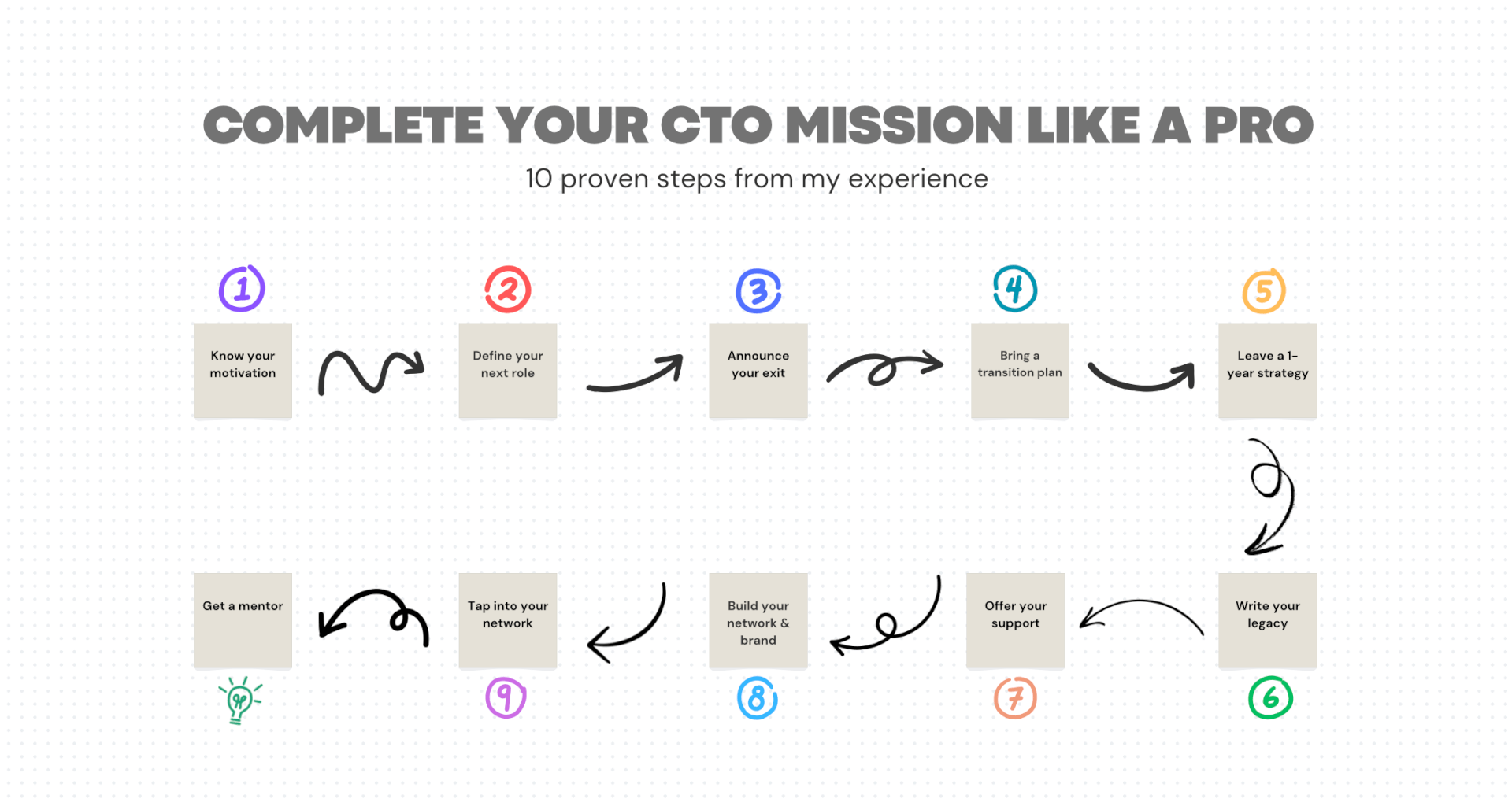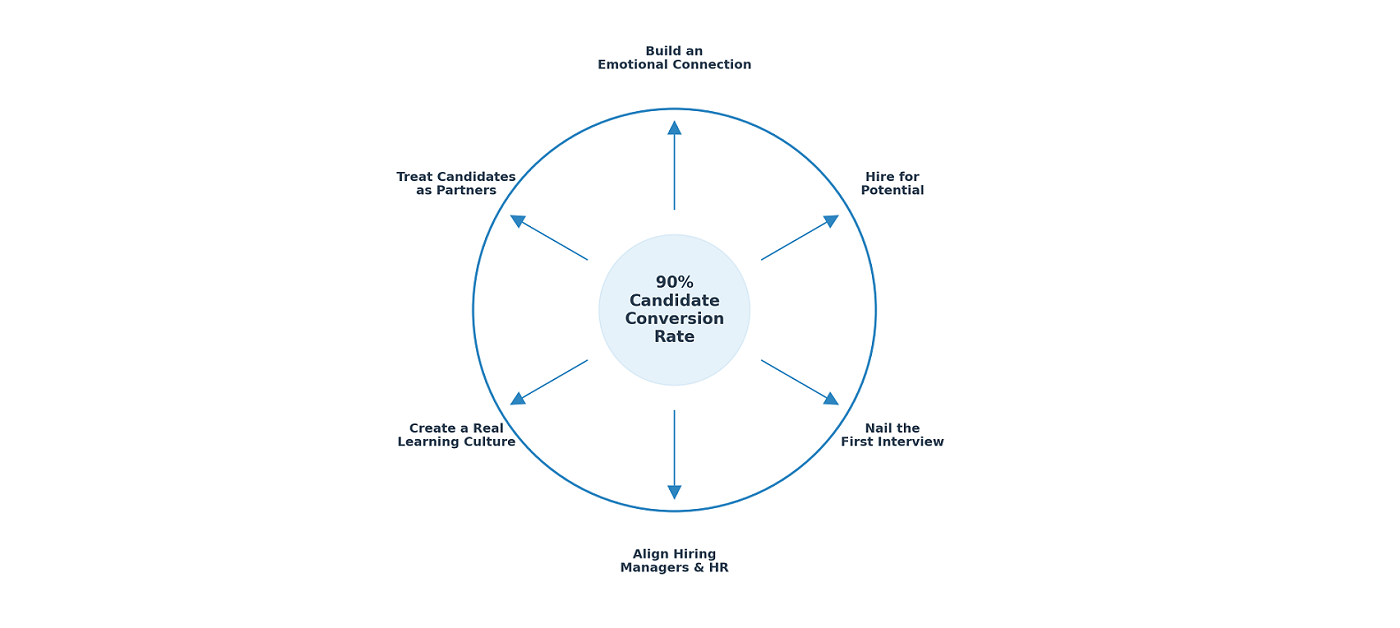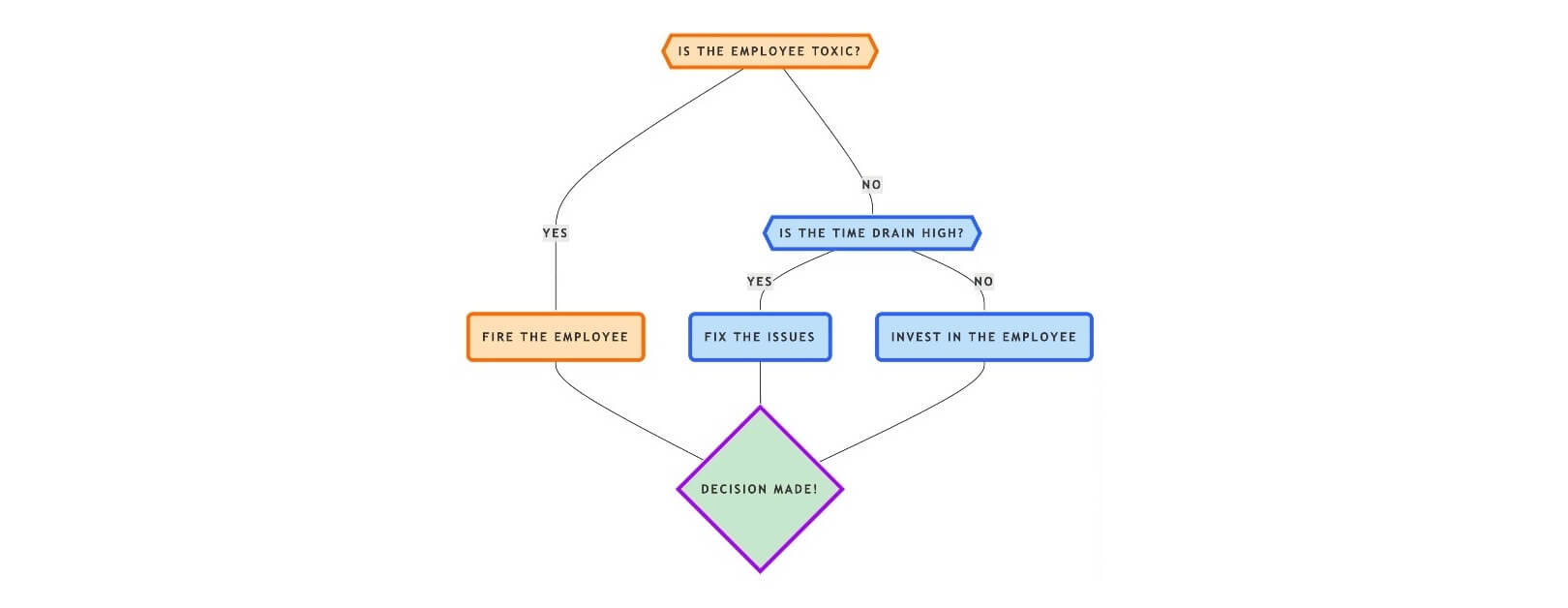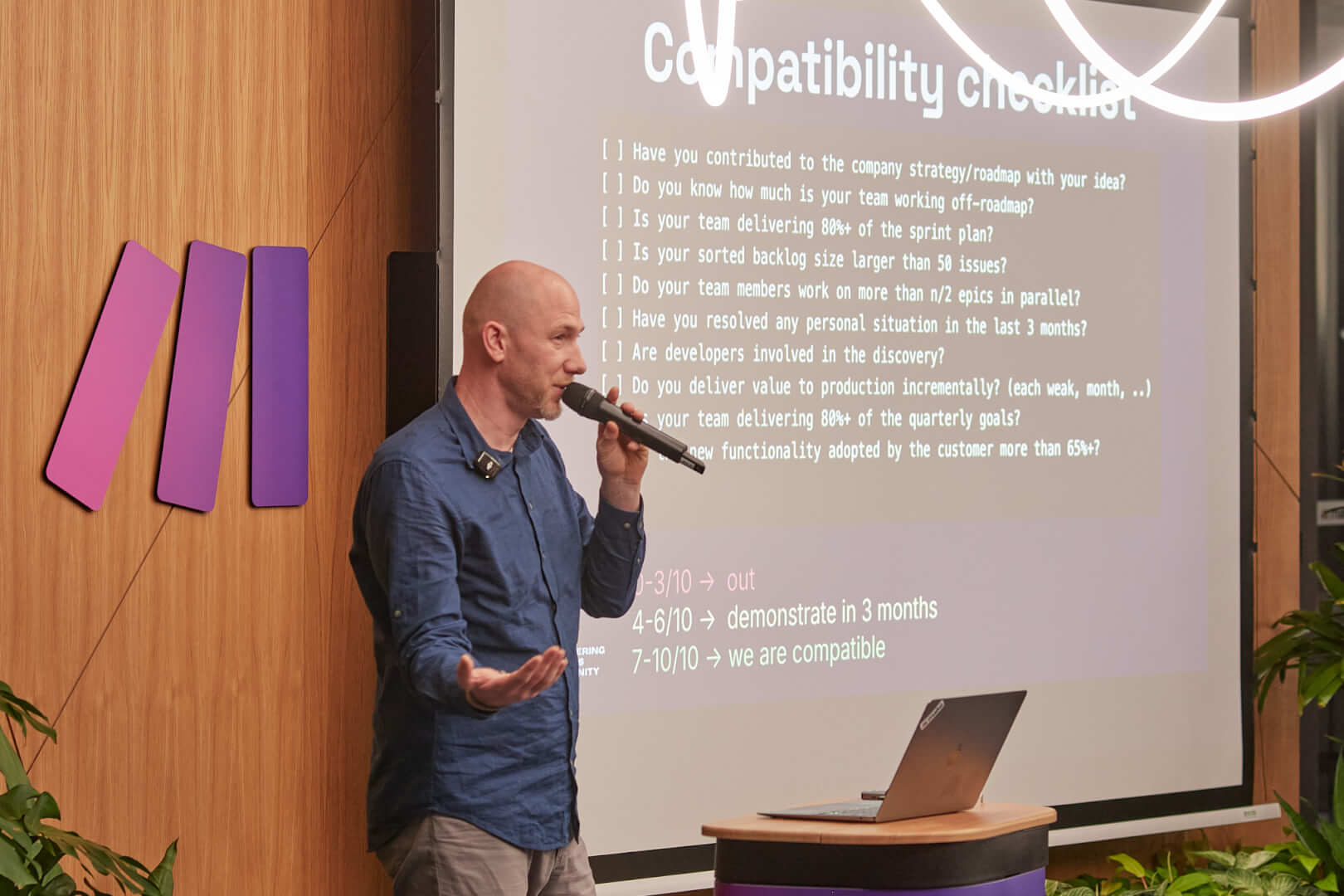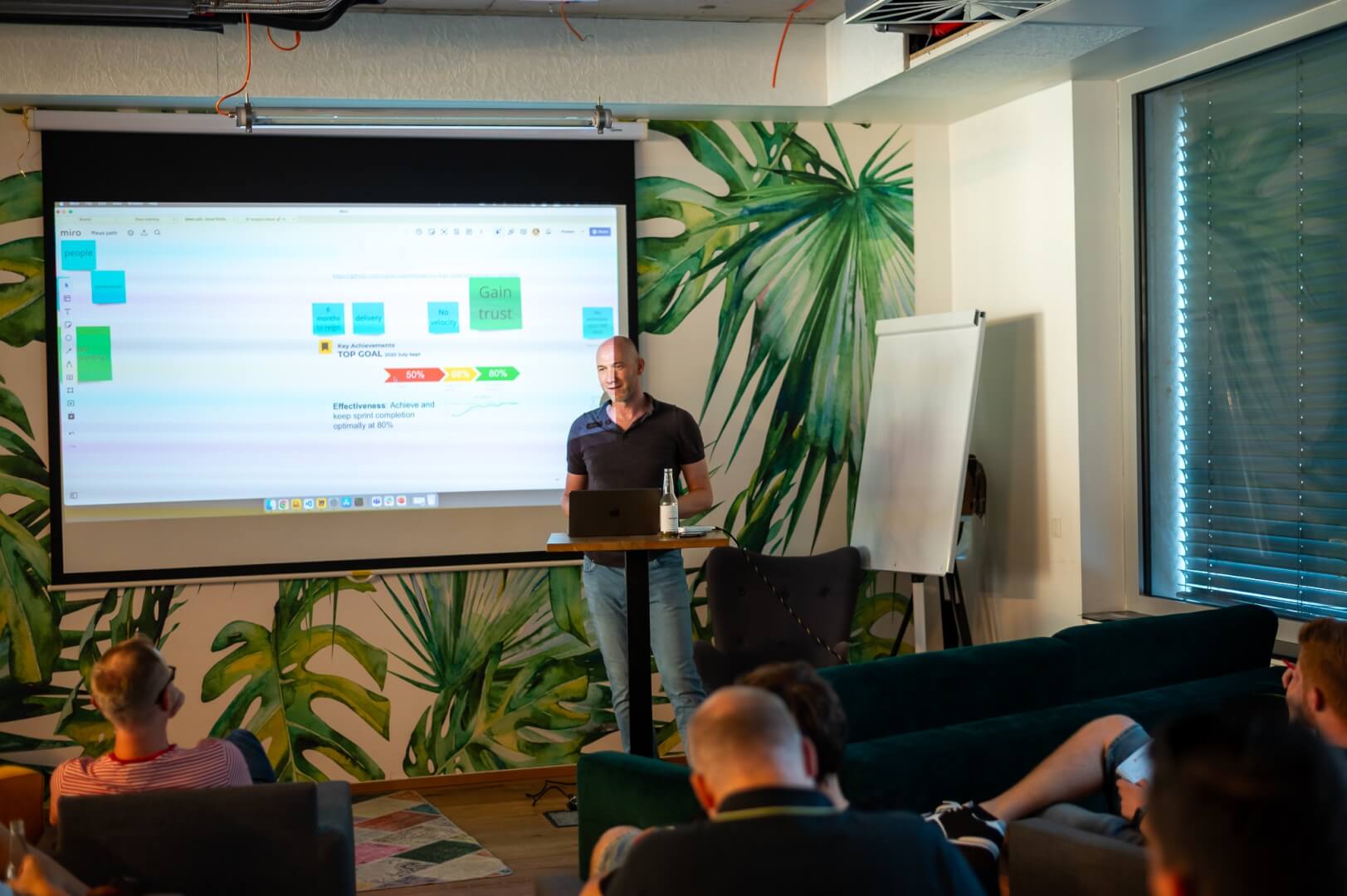Leave a lasting legacy, grow your network, and step confidently into your future opportunities.
As a CTO, there comes a point when it’s time to move on, whether it’s your choice or the end of a mission you were hired for. Here’s how to finish strong and leave your current company and professional legacy on a high note.
My CTO exit strategy is grounded in years of experience working with some of the largest software companies in the Czech Republic and mentoring engineering leaders across Central Europe.

1. Know your motivation for change
Understanding your next move helps you land where you belong — and avoid where you don’t.
Before anything else, take time to understand what you really want and expect from the change. Are you looking for growth and new challenges, or just trying to escape your current situation? Having a clear perspective will guide you in the right direction.
2. Define what you’re looking for next
Don’t let the market dictate your path. Take control of your career by defining your next step.
Knowing what you want before jumping into interviews will help you find the best fit for your goals and needs. Here are some important areas to consider:
- Company size: Startup or scale-up?
- Company type: Product-focused or project-based?
- Language skills: Open to working internationally?
- Compensation: Have a clear idea of your ideal package (salary, bonuses, perks, stock options).
- Work preferences: Remote, on-site, or hybrid?
- Domain expertise: Fintech, AI, biometrics, e-commerce, etc.
3. Be upfront about your exit
Don’t burn bridges. Be transparent to transition smoothly and protect your reputation.
Once you’re sure, set your exit date and communicate it early. If there’s no fixed timeline but you sense your mission is ending, give at least a year’s notice. This approach is direct and professional, allowing everyone time to adjust. Leaving unexpectedly will damage your relationships, reputation, and references for future opportunities.
4. Bring a transition plan
If you leave the company in chaos, you’ll damage their future and your legacy.
Don’t just say you’re leaving — bring a game plan. Present a strategy outlining how the company can transition smoothly, including a high-potential replacement to carry on your work and key initiatives. Whether you find your successor or mentor someone internally, make sure you leave the company in good hands.
5. Leave a strategic roadmap
A strategic roadmap helps your initiatives continue to succeed long after you’re gone.
To leave your mark, offer a 1-year strategy with clear recommendations for ongoing and future projects. This is what professionals do.
6. Write your mission statement
No mission story, no next step.
Stop launching new initiatives and shift your energy toward closing out your mission. Create a powerful narrative about what you’ve achieved — a strong mission statement highlighting how you’ve moved the company forward.
Your story needs to be true, real, and lasting — it shouldn’t evaporate two weeks after you leave the company.” This will be your selling point for future roles.
Example mission statements:
“I scaled the business from $500K to $50M in three years, expanding tech and product capabilities.”
“I led the transition to a full cloud solution in 13 months, enabling 10x growth.”
“I shifted the company from sales-led to product-led in nine months, focusing on high-impact functionalities.”
“I grew the product from one country to a global offering with $50M annual revenue in three years.”
7. Offer your support after you’re gone
Signal your dedication to the company’s success, even in your absence.
Extend your support as a mentor or advisor after you leave. This shows your loyalty to the company’s future and helps your successor take over, reinforcing your leadership reputation and the legacy you leave behind.
8. Delegate, build your network, & boost your brand
A strong network opens doors to new opportunities. A genuine personal brand positions you for lasting success.
As you change over, start delegating responsibilities to free up time for expanding your network. Increase your visibility and build your brand by tapping into conferences, panels, meetups, podcasts, or Slack channels.
One way to do this is by joining our Engineering Leaders Community of 1,000+ members. We offer high-value opportunities to connect with other engineering leaders and enhance your brand through active community involvement.
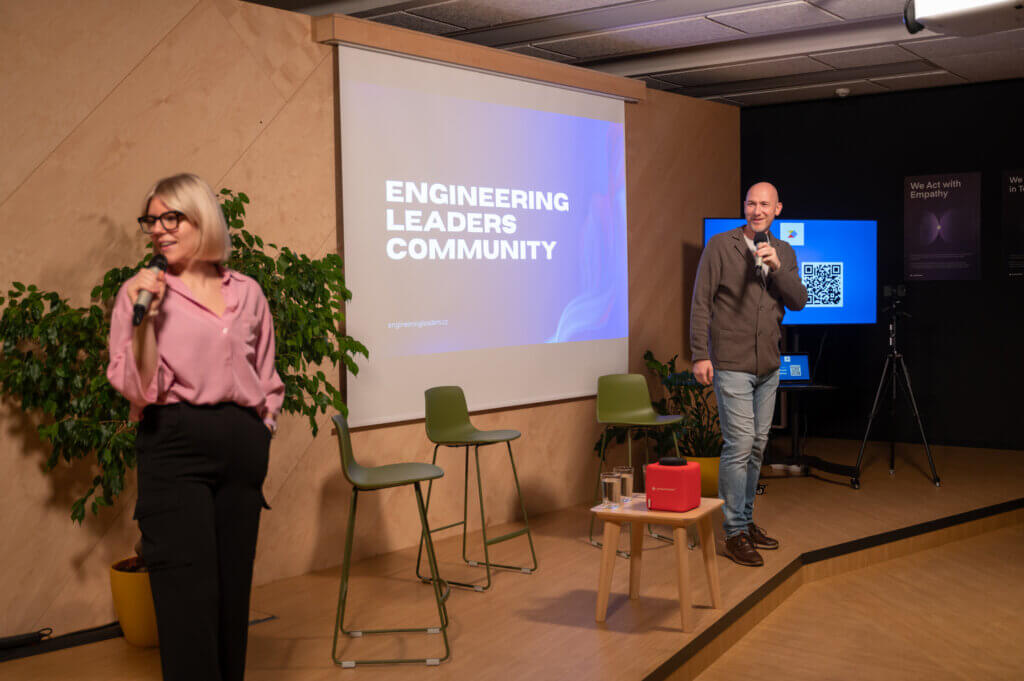
9. Leverage your network for new roles
Your network is more likely to lead you to meaningful opportunities than traditional job hunting methods.
Once your network is strong, start letting people know you’re available. This casual approach often leads to more authentic opportunities than relying on headhunters or job boards. Your connections can link you to roles that truly align with your skills and goals.
10. Find a mentor
A mentor empowers you to make smarter decisions, boosts your market value, and opens doors you might not have noticed.
Without one, you risk missing out on valuable advice that could shape your career. You might make avoidable mistakes, slowing your progress or causing you to miss important opportunities. Plus, a mentor can introduce you to their vast network of connections.
Curious about how my mentoring business and the Engineering Leaders Community evolved in 2024? Check out my journey and learnings here.
Bonus tip for interviews
Stand out from other candidates by suggesting an internal audit.
When interviewing for your next CTO role, don’t sugarcoat your mission. Offer to run an internal audit in your first three months to understand the company’s product strategy, business model, and operational efficiency. From there, propose a clear plan for achieving 10x improvements.
Key takeaways:
- Complete your current mission with care and professionalism.
- Build a strong network and personal brand to attract future opportunities.
- Know exactly what you’re looking for in your next role to find the best fit.
Master your CTO exit strategy to set up your future success
Execute your exit like a pro — complete your mission, grow your network, and define your next move. A strategic departure sets the stage for your next big role as a CTO.
About Marian Kamenistak
Marian provides coaching and mentoring to engineering managers and leaders across various levels, helping organisations to succeed in building products.
On top, Marian leads the Engineering Leaders Community, organising 9 meetups a year for Engineering Leaders, Managers, Tribe leads, VPEs and CTOs in Central Europe.
Read more about Marian’s mission.
Subscribe and stay tuned for the next post! 💪
